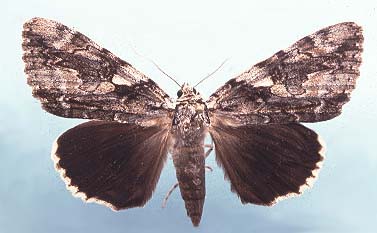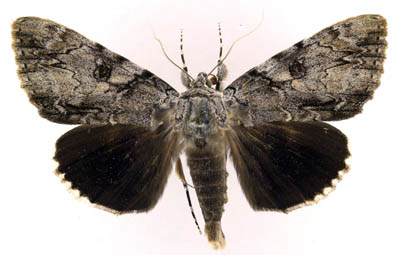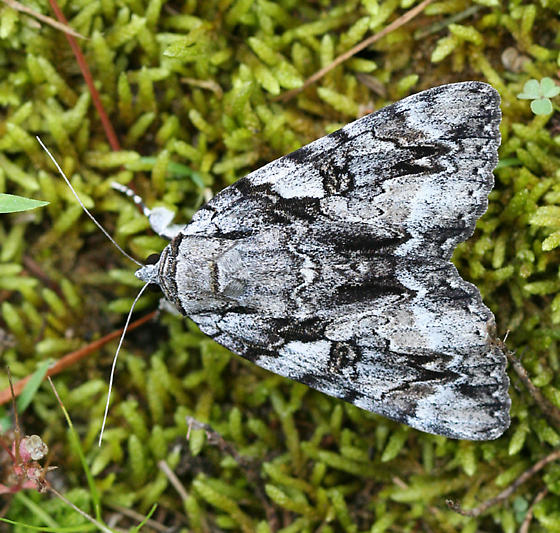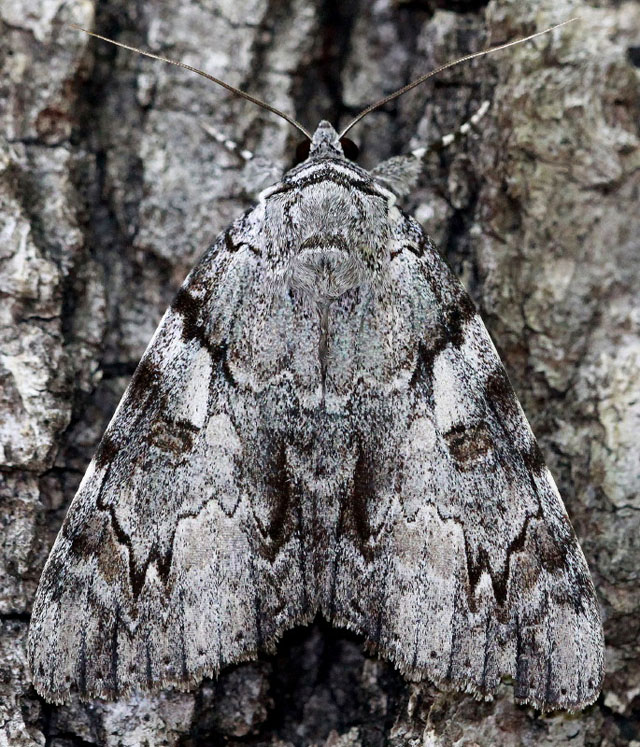Catocala dejecta
Catocala dejecta
kah-TOCK-uh-lahMdee-JECK-tuh
Strecker, 1880

Catocala dejecta courtesy J. K. Adams.
This site has been created by
Bill Oehlke.
Comments, suggestions and/or additional information are welcomed by Bill.
| TAXONOMY:
Superfamily: Noctuoidea
Family: Erebidae, Leach, [1815]
Subfamily: Erebinae, Leach, [1815]
Tribe: Catocalini, Boisduval, [1828]
Genus: Catocala, Schrank, 1802
|
DISTRIBUTION: Catocala dejecta,
The Dejected Underwing
(wingspan: 56-73mm), flies from
Massachusetts and
Connecticut south
through New Jersey to
Florida, west
to Texas and Oklahoma and north to
southern Ontario.
Arkansas,
District of Columbia,
Georgia,
Illinois,
Indiana,
Kansas,
Kentucky,
Louisiana,
Maryland,
Michigan,
Mississippi,
Missouri,
Nebraska,
New Hampshire,
New York,
North Carolina,
Ohio,
Pennsylvania,
Rhode Island,
South Carolina,
Tennessee,
Texas,
Virginia and
West Virginia.
The light coloured, almost white, patch from the reniform and subreniform juncture to the costal margin is diagnostic. The hindwing fringe is usually also pure
white with black wing veins extending like "teeth".
Catocala dejecta Canadian Biodiversity Information Facility |

|

Catocala dejecta, Stillwater Township, Sussex County, New Jersey,
July 11, 2006, courtesy of Joe Garris
Note the open, light "pork chop" shape of the subreniform spot.
The two "teeth" in the pm line above the subreniform spot are
relatively short and blunt.

Catocala dejecta, Cumberland Co, North Carolina,
June 14, 2005, courtesy of
Lynette Schimming.
Also note how in C. retecta below, the subreniform spot is
uniformly more slender and the two "teeth" immediately above the
subreniform spot are longer and sharper.

Catocala retecta, Stillwater Township, Sussex County,
New Jersey,
August 2, 2006, courtesy of Joe Garris.

Catocala dejecta female, Shaw Lake, Barry County, Michigan,
lights, July 18, 1986, courtesy of Harry King.
FLIGHT TIMES AND PREFERRED FOOD PLANTS:
Catocala dejecta are usually on the wing from June to
October, often earlier in the southern states.

Catocala dejecta Bodcau WMA, Bossier Parish, Louisiana,
May 17, 2012, courtesy of Jeff Trahan.
The Catocala dejecta caterpillar feeds on hickories and oaks.
ECLOSION:
Adults eclose from pupae at soil surface.

Catocala dejecta, Stillwater, Sussex County, New Jersey,
July 28, 2021, courtesy of Joe Garris.
SCENTING AND MATING:
Catocala dejecta females emit an airbourne pheromone and males use their antennae to track the scent plume.
EGGS, CATERPILLARS, COCOONS, AND PUPAE:
Eggs are deposited on tree bark in the fall and hatch the following spring.
Larval Food Plants
Listed below are primary food plant(s) and alternate food plants.
It is hoped that this alphabetical listing followed by the common
name of the foodplant will prove useful. The list is not exhaustive,
although some species seem very host specific.
Experimenting with closely related foodplants is worthwhile.
Carya glabra
Carya ovata.......
Quercus
|
Pignut hickory
Shagbark hickory
Oak
|
Return to Main Catocala Index
This page is brought to you by Bill Oehlke and the
WLSS. Pages are on space rented from Bizland. If you would like to become a "Patron of the Sphingidae/Catocala Sites",
contact Bill.
Please send sightings/images to Bill. I will do my best to respond to requests for identification help.
Enjoy one of nature's wonderments: Live Saturniidae (Giant Silkmoth) cocoons.

|

To show appreciation for this site, click on the flashing
butterfly to the left, a link
to many worldwide insect sites. |









